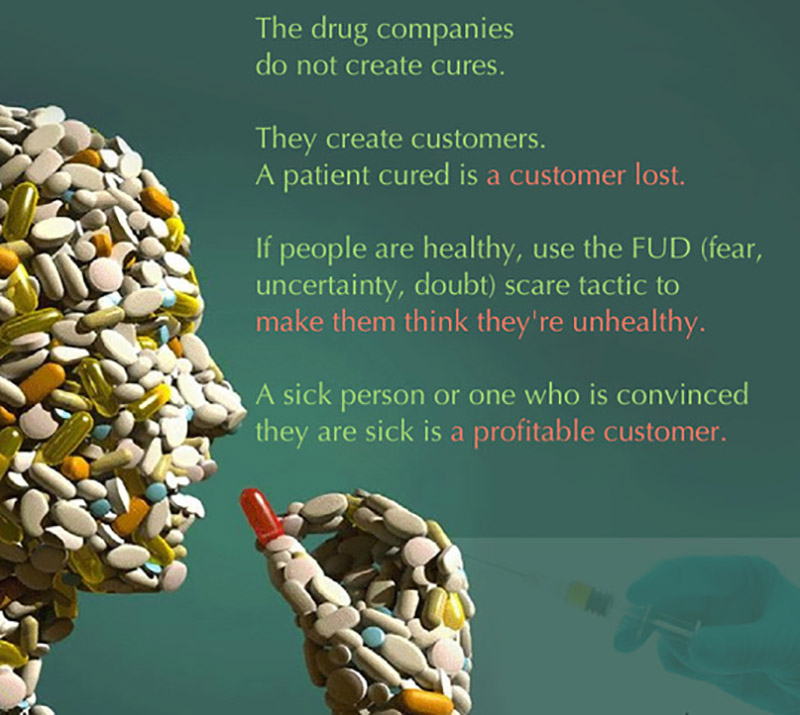“Abdominal discomfort or pain? Bloating? Constipation? It’s time to Talk to Your Doctor About IBS” —Novartis Ad
Once upon a time, a rich and greedy captain of industry who headed one of the largest drug companies in the U.S. bemoaned the fact that he was forced to sell his drugs only to sick people, a very small share of the consumer market. What he yearned to do was to sell his potions to everyone, increasing the market for his drugs to infinity.
It took the profit fairy almost half a century but that mogul’s dream has burst into life. Today, drug companies aggressively target healthy people. In the blink of an eye, daily living conditions become treatable diseases. Your shy neighbor proudly announces that she has seasonal affective disorder (SAD) and the doctor has given her a prescription. Going through a “rough patch?” Your girlfriend married someone else, your husband left you. Yesterday: too bad, you’ll get over it. Today: a serious mental condition requiring —what else —drugs. And maybe not just one, but two or three and a few others to cope with the side effects of the original ones. Moodiness and cramps at that time of the month? Yesterday: a normal part of life. You’ll get over it. Today: a treatable disease, premenstrual dysphoric disorder (PDD). Lucky for you, there’s a prescription drug for that. Going to the bathroom too much? Yesterday: a minor inconvenience. Today: a serious condition, overactive bladder (OAB). See your doctor immediately for a prescription or … Actually, nothing will happen but having joined the ranks of the “worried well,” you’re more than willing to believe that a prescription medicine will keep you from serious harm. Are you a woman in her middle years that has been branded with the “silent” bone disease, osteoporosis? You only need to be a certain age to be treated for it or its imaginary precursor Osteopenia. The manufacturer of Fosamax, one of the first Osteoporosis drugs warns that taking the drug may cause “severe joint, bone, or muscle pain.” If that doesn’t slow you down, be on the lookout for “new or unusual pain in your thigh or hip.” Wait, wasn’t that what you were taking the drug for?
The list of common aspects of daily life that in drug company speak are now “treatable conditions” is vast. Here’s a sampling: BED (Binge Eating Disorder), OIC (Opioid Induced Constipation), for those of you who are constipated but don’t take opioids Pharma has obliged with another condition CID (Chronic Idiopathic Constipation), Gastro-esophageal reflux disease AKA heartburn (GERD) and Adult-onset attention deficit disorder (AADHD)
Profit is the powerful motivator behind the drug companies’ disease branding. It’s as simple as 1,2,3. First, mount a vigorous advertising campaign defining a condition, symptoms and all, in the minds of both patients and their doctors. Erectile Dysfunction or ED is a good example. No more stigmatizing with that humiliating term, impotence, but a treatable condition ED that men can talk about and not feel embarrassed. Second, link a drug to the condition. In 2017, Pfizer, makers of Viagra, the granddaddy of all the ED drugs, reported $1.2 billion in revenues. Third, produce ads showing jubilant men exhibiting their “new-found” sexual vigor.
The drug companies have been onto this scam for decades. The advent of television and other venues for advertising has kicked it into high gear. For one of the earliest examples of “condition branding” we have to go back to the 1920s. There was trouble in paradise and the executives at the Warner Lambert drug company were experiencing GAD (Generalized Anxiety Disorder). Unlike the rest of us suckers, they didn’t look for a pill to solve their problem, they looked for a new source of revenue for one of their premier products, Listerine which had meager sales and flat profits. Something had to be done and fast! The geniuses at Warner Lambert put their thinking caps on. How to market Listerine to make it a must-have product? “Condition branding” was the ticket. Step 1, take a common non-serious problem, bad breath, and redefine it as a serious sounding but treatable medical condition: halitosis. Step 2, Hype the disastrous results of doing nothing —from divorce to missed career opportunities. Step 3, within six years, a 100,000 “dog” became a $4 million profit machine and halitosis — a household word.
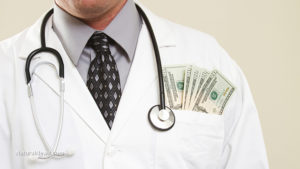
The biggest problem with this shell game? It’s working. According to the Mayo Clinic, 70% of Americans take one prescription drug. As an indication of the brilliant success of Pharma’s branding campaign more than 50% take two or more. Testifying to the potency of DTC (direct to consumer) advertising, two-thirds (67%) of doctor visits end with a prescription. In 2017, Pharma spent $6.13 billion to convince patients that (a) they have a treatable condition or illness and (b) there’s a treatment (usually a very expensive prescription drug). The swindle doesn’t end there. As the conduit to prescriptions, doctors are the last hurdle. The simplest solution “show them the money.” works like gangbusters. In 2012, drug companies shelled out $24 billion to doctors’ in their “friendly persuasion” offensive (emollients in the form of speaking fees, “educational” seminars at 5-star resorts, lavish lunches at doctors’ offices, other monetary inducements) aimed at your local pill dispenser.
Consuming drugs has become the new national pastime. In 2017, 4½ billion prescriptions were written. In a recent survey 62% of doctors admitted they would prescribe what they consider innocuous drugs to patients who had no medical need but who, primed by drug company advertising, demanded it.
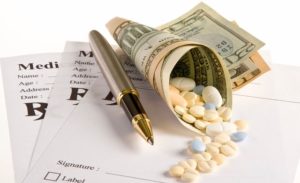 A patient went to see her doctor and wanted an antibiotic for her cold. The doctor explained that since her cold was from a virus, an antibiotic wouldn’t do her any good. After completing her explanation, the doctor exited. Later she walked by the treatment room and noticed the patient was still there —waiting for her antibiotic prescription. Certain the patient would get the prescription from another doctor if she refused, the doctor wrote out a prescription for a drug she knew wouldn’t help.
A patient went to see her doctor and wanted an antibiotic for her cold. The doctor explained that since her cold was from a virus, an antibiotic wouldn’t do her any good. After completing her explanation, the doctor exited. Later she walked by the treatment room and noticed the patient was still there —waiting for her antibiotic prescription. Certain the patient would get the prescription from another doctor if she refused, the doctor wrote out a prescription for a drug she knew wouldn’t help.
Pharma’s profit rampage can have horrifying consequences. In the late nineties, the drug company Merck announced its new blockbuster drug for arthritis and acute pain Vioxx. Five years later Merck was forced to withdraw the drug, but not before 60,000 Americans (500,000 worldwide) had died from heart attacks and strokes caused by the drug —more than died during the Vietnam war. When it comes to assigning blame according to David Graham an FDA official, Merck isn’t the only culprit, “there’s blood on the FDA’s hands as well.” Commissioned as the watchdog agency for the drug industry, the FDA’s bark is a whimper and it’s bite non-existent as evidenced by its dismal history of protecting drug company profits at the expense of public health.
Why should we expect more? In the U.S. free market economy, whether a company makes widgets or life-saving medicines, the engine driving the train is profits. Where are the folks we elected to protect us —congress and the president? Too busy pocketing drug company money. In the last decade, drug makers have poured $2½ billion into lobbying and campaign donations. Nine out of ten house members and 97 (all but 3) senators have taken campaign contributions from the major drug companies. So much for an FDA official’s advice “People should turn to Congress and demand a drug safety system that is free from corporate influence” Fat lot of good that would do. As virtually the only advanced industrialized nation in the world that does not regulate drug prices, U.S. drug companies can charge federally funded Medicare (the largest U.S. drug buyer) whatever its rapacious business model dictates.
The most recent stomach-turning example of the untrammeled greed and inhumanity of the U.S. drug industry is the pricing of a formerly little known drug and the injector that delivers it. When it comes to the opioid epidemic, drug companies profit from both ends of this catastrophe. In the first place, Perdue aggressively marketed its opioid, Oxycontin, exaggerating the benefits and downplaying major side effects, like addiction. Like magic, Oxycontin became the gold standard to treat major and minor pain. When the body count started rising (in 2017 over 64,000 overdose deaths were recorded), other drug companies’ owning the patents on the antidote (which had been around since 1971) began raising their prices to astronomical levels (in one case a price hike of 500% in two years from $690 to $4,500) effectively dooming more overdose victims to death in local communities unable to afford enough of the antidote. (Read SA’s “Opioid Epidemic: Drug Companies Killing Americans in the Name of Profits” here)
As the third leading cause of death (only heart disease and cancer kill more Americans), drugs are big business. Most of what doctors know about drugs comes from drug company sales people usually paid on commission. Often results are dressed up, side effects glossed over, and treatment results concocted (usually out of whole cloth).
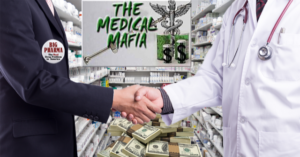
To rehash the gory details — The most inventive (and most profitable) drug companies have hit the nail on the head as they transform “natural processes” into medical conditions, rebrand inconsequential difficulties as serious diseases and promote imaginary conditions —all of which require (overpriced) drugs. Welcome to the age of corporate creation of disease! It takes a village and doctors are generally part of the scam as the boundaries of what is a treatable illness widen, doctors see more patients and drug companies sell more drugs. And the U.S. free market economy rolls on.
There’s a new wrinkle to boosting profits in Pharma land— trading on Americans’ fear of imminent death. A recent ad cautioned the “worried well”
“You eat healthy, take statins, but struggle to lower your LDL bad cholesterol…A heart attack or stroke could start without warning pulling you away from everything you love [enter ambulance with lights flashing and two EMT with grim expressions] …Your risk of a heart attack or stroke is real…Now you can reduce that risk with Repatha…[that] is clinically proven to significantly [how significantly not disclosed] reduce your risk of a devastating heart attack or stroke. Don’t let a heart attack or stroke come between you and everything you love. Tell your doctor you’re ready to lower your LDL and reduce your risk for real with Repatha.” [happy family waving at the camera]
By this time, you’re probably too scared to pay much attention to the recitation of side effects accompanied by soothing background music. If you do pay attention, you will find that one of the side effects happens to be itself a major cause of strokes and high attacks — “high blood pressure.”
Yearly cost of Repatha — $14,500. Yearly cost of a generic statin for the same condition —$250.
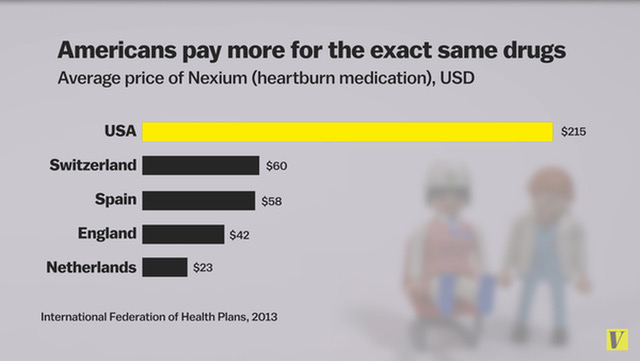
Isn’t it time to admit the obvious: the pharmaceutical industry doesn’t sell drugs, it sells lies about drugs. Is there an American over the age of 12 who hasn’t gotten the message: the U.S. health care industry has one pricing model —whatever the market will bear. In the U.S. patients pay as much as 16 times what people in other countries pay for the same drugs. To make matters worse, the U.S. is pill popper central. In 2015, Americans shelled out $1,026 per person for prescription drugs, hugely more than in other countries like Germany ($678), France ($596) and Australia ($590).
How do you get beyond the fairy tales Pharma is spinning? For instance, their contention that exorbitant pricing helps them discover new drugs. False: the sad fact is that 9 out of 10 drug companies spend more on sales and marketing than on research for new potentially life-saving drugs. Even a former Pope condemned the “overriding financial interest in pharmaceutical research.” (Pope John Paul II). A world-renowned critic of the drug industry, Peter Gotzsche titled his book —Deadly Medicine and Organized Crime.
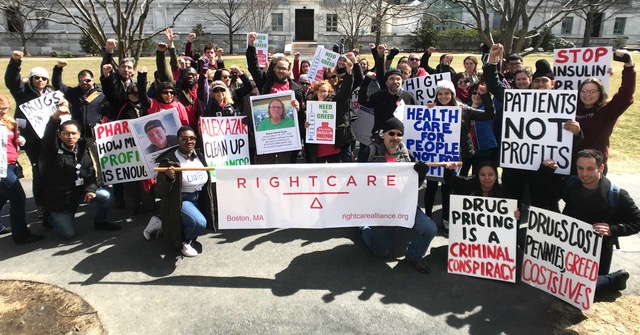
Last year, as the FDA was calling for more affordable drug prices, it approved a new hepatitis C drug, Vosevi, The drug company announced that it would sell the drug for $25,000 a bottle with three bottles required for treatment —total cost $75,000.
Putting profits above peoples’ health. That’s the real business model in Pharma land. Whatever the market will bear. Call it the American way of drug pricing.
2,430 total views, 1 views today
